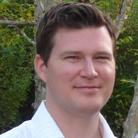Rediscover Historic Downtown Spanish Fork
Community Planning Assistance Team Report

Spanish Fork is 50 miles south of Salt Lake City adjacent to the city of Provo. The city experienced rapid growth and suburbanization with population expanding by more than 200 percent in the last two decades. In the process, the downtown's original center faded from the community’s attention as a preeminent destination and became a place most often seen from behind the wheel as people drove through. Investment shifted and began concentrating outside the historic downtown, leaving the modest, locally owned shops of Main Street to sustain their businesses with few resources at hand. Spanish Fork requested CPAT help with revitalizing their Main Street.
The Spanish Fork CPAT worked with city leaders, downtown business and property owners, and community members to create a unified vision and identity for Spanish Fork's Main Street. The unified vision was the basis for the team's implementation action plan to set community members on a path to achieving a revitalized, authentic, and sustainable downtown. The report lays out the team's twelve recommended implementation strategies with specific steps necessary to catalyze revitalization and rediscovery of Spanish Fork's gem, the historic downtown.
Meet the Team

Team Leader
Deborah Meihoff, AICP

Team Member
Andrew Vesselinovitch, AICP

Team Member
Sean Daly, AICP

Team Member
Robert A. Simons

Team Member
Robyn Eason, AICP
Details
Table of Contents
Executive Summary
Purpose | Process | Principles
The Reason for a Spanish Fork CPAT
The CPAT Process
The Community's Guiding Principles for Revitalization
The CPAT's Observations of Historic Downtown
The Opportunities and Challenges of Historic Downtown Spanish Fork
Recommendations | Implementations Strategies
Your Potential: Market Opportunity and Transformation
Your Buildings: Urban Form and Architecture
Your Role: Local Leadership and Community Empowerment
Your History, Culture, and Community: Spanish Fork Heritage Trail
Your Main Street: Streetscape, Parking, and Identity
Resources for Implementation
Best Practices Guide to Streetscape and Operational Design of Spanish Fork's Main Street
Real Estate Market Analysis for Spanish Fork
The CPAT Initiative
The Purpose of CPAT Initiative
Meet the Spanish Fork CPAT Team
Acknowledgments


